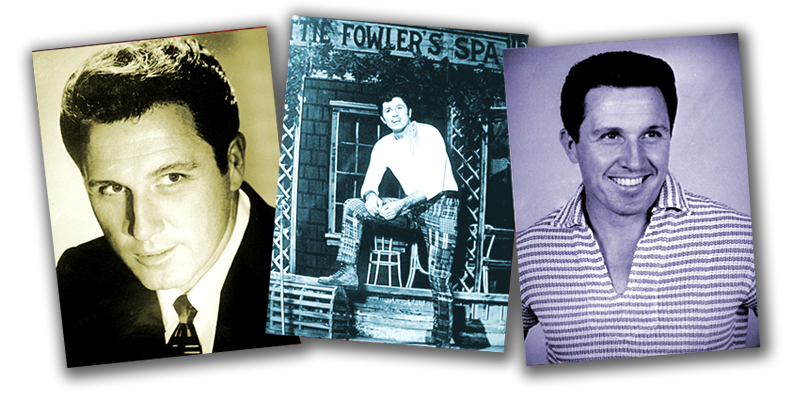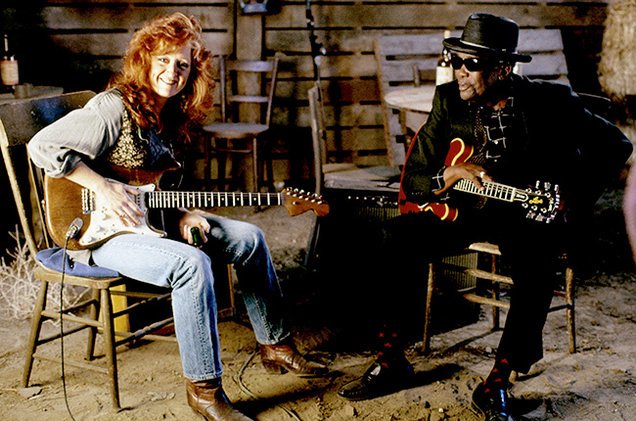
Ruth Brown, 78, a rhythm-and-blues singer whose hits in the 1950s made Atlantic Records “the house that Ruth built” and who revived her career decades later as the Tony Award-winning star of the musical revue “Black and Blue,” died Nov. 17 at St. Rose Dominican Hospitals in Henderson, Nev., after a stroke and heart attack.
Ms. Brown, who lived in Henderson, a Las Vegas suburb, became known as a persistent and vital activist in the musicians’ royalty reform movement of the 1980s. Her efforts brought aging, often ailing musicians payments that major music companies had long denied them.
With an aching, gospel-tinged approach to lyrics, Ms. Brown was among the top black pop singers of the early 1950s. Many of her recordings topped the R&B charts, including the rollicking “(Mama) He Treats Your Daughter Mean” and the ballad “So Long.” Her other popular recordings included “Teardrops From My Eyes,” “Lucky Lips,” “5-10-15 Hours,” “Mambo Baby” and “Oh What a Dream.”
Her admirers spanned several generations. Little Richard once said that he borrowed his trademark whoop (“Lucille-uh”) from her. Bonnie Raitt, with whom Ms. Brown played in recent years, also cited her as a musical influence.
Between career peaks, Ms. Brown endured a professional slump that left her at times in dire poverty. She partly blamed her ignorance about business matters. However, Atlantic’s royalty system did not favor artists, with its low royalties and faulty bookkeeping.
Many artists left the studio owing money for production costs, which Ms. Brown said was a way to discourage attempts to collect payment when a studio reissued material. By Atlantic’s calculations, Ms. Brown owed the company $30,000.
The matter stalled until her Tony — as well as a Grammy for the jazz recording “Blues on Broadway” (1989) — brought a resurgence in public attention. Working with Washington lawyer Howell Begle, she arranged an alliance of political forces, including Jesse L. Jackson, to pressure Atlantic and its longtime owner, Warner Communications, for payments.
Ms. Brown received $20,000 and was forgiven all “debts.” The company changed its royalty payment system to favor her peers, other R&B pioneers. This was credited with inspiring a royalty reform movement among other labels, including MCA.
Warner’s Atlantic subsidiary also agreed to contribute $1.5 million to start the Rhythm and Blues Foundation, a nonprofit aid organization for needy entertainers now in Philadelphia.
Ms. Brown was committed to having the group give money to her peers who were suffering financially and could not afford medical attention. She became critical of how the foundation evolved and went on a publicity attack.
“It’s my baby, but it’s kinda jumping out of my playpen,” Ms. Brown told Reuters, noting that money was spent on glitzy award ceremonies and payments to artists far from skid row, including Isaac Hayes Nick Ashford and Valerie Simpson.
Ruth Alston Weston, the eldest of seven children, was born Jan. 12, 1928, in Portsmouth, Va. She first sang with her father in his church choir but much preferred the pop music of the day, what she jokingly called “the devil’s music.”
Ms. Brown described herself as a mischievous child, sneaking out at night to sing for troops at wartime USO shows and dressing like singer Billie Holiday, down to the trademark gardenia in her hair.
Her singing led to an early, ill-fated marriage to a bigamous sailor named Jimmy Brown (she kept his name professionally). Unwelcome at her family’s home, she wound up with the Lucky Millinder band in Detroit, but the job ended a month later in Washington when she was caught serving drinks to the musicians.
She stayed on in the city, where she found important backers such as nightclub owner Blanche Calloway, sister of bandleader Cab Calloway, and Willis Conover, a Voice of America disc jockey.
Conover urged Ahmet Ertegun and Herb Abramson, who had just started Atlantic, to sign her. Ms. Brown was critically injured in a car accident on her way to the New York studios. Atlantic paid for her 11-month hospital stay, and she made her recording debut in 1949 on crutches.
Ms. Brown became the company’s first star, variously marketed as “Miss Rhythm” and “the girl with the tear in her voice.” She toured on bills with Ray Charles, Billy Eckstine and Clyde McPhatter, with whom she sang a duet of “Love Has Joined Us Together” and had a child.
With most of her songs played on radio stations catering to black listeners, she felt overshadowed by white singers who covered songs she first popularized, such as “Oh What a Dream.” She later said, angrily: “I never got to do ‘The Ed Sullivan Show.’ Patti Page did.”
She left Atlantic in the early 1960s making $350 per record side. After marrying a police officer who lived on Long Island, she attempted a more conventional life, but the marriage grew strained when she began singing nights.
After holding a series of low-paying jobs — floor scrubber, bus driver — she wrote to Atlantic’s Ertegun asking for money. He sent a $1,000 check — “crumbs from the rich man’s label,” she said in her 1996 memoir, “Miss Rhythm,” written with Andrew Yule.
Legal efforts to extract money she thought she was owed were “expertly stonewalled by the powers at Atlantic,” she wrote. “And always, always there was the constant threat from them: Leave, get lost, drop it, or we’ll sue for recovery of the money you owe” from production costs calculated by the company.
Her situation began to improve in the early 1970s, after comedian Redd Foxx, an old friend, took an interest in her circumstances. Foxx funded her move to Los Angeles and got her acting work in stage musicals and TV shows, including his “Sanford and Son.”
Her rise was slow, but she cultivated many new fans as a flamboyant disc jockey in John Waters’s “Hairspray” (1988). She followed with a starring role in “Black and Blue,” and reviewers noted her gift at conveying with extraordinary sauciness the furniture-store innuendo of Alexander Hill and Andy Razaf’s “If I Can’t Sell It, I’ll Keep Sitting On It.”
She also hosted a public radio blues program and in 1993 was inducted into the Rock and Roll Hall of Fame. She overcame the effects of a stroke in 2000 and continued an active singing career in Las Vegas and elsewhere until her illness.
Of her offstage life, Ms. Brown once said, “I could pick a good song, but I sure couldn’t pick a man.”
After her first marriage ended, she had a romance with saxophonist Willis “Gator Tail” Jackson, whom she described as a Lothario. She said her second husband, saxophonist Earl Swanson, was a drug addict who beat her; they divorced. Her third marriage, to police officer Bill Blunt, also ended in divorce.
Survivors include a son from her relationship with McPhatter, singer Ronnie McPhatter of Los Angeles; a son from her second marriage, Earl Swanson Jr. of Henderson; three brothers; a sister; and a grandson.






 Visitors Today : 48
Visitors Today : 48 Now Online : 0
Now Online : 0
















































































































